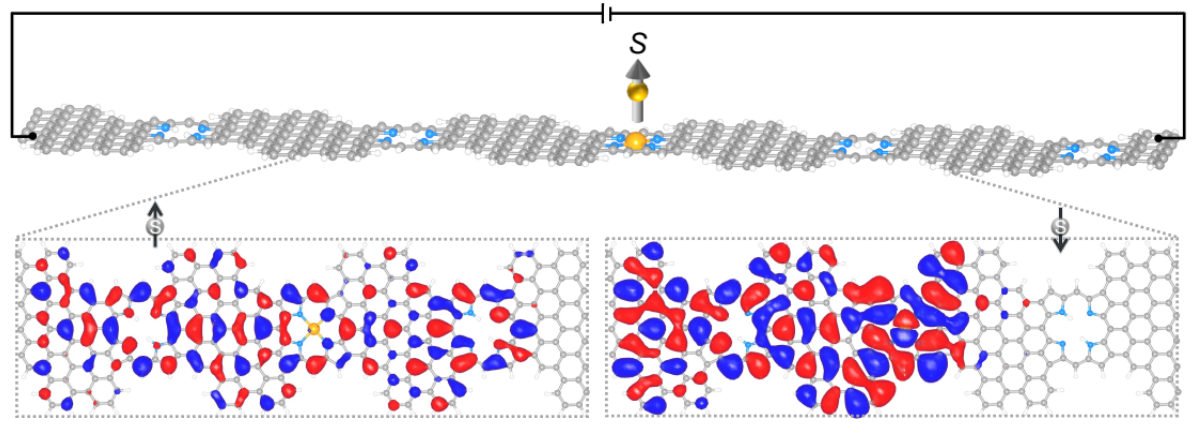Poster presentation
Tunable spin and transport in porphyrin- graphene nanoribbon hybrids
Fei Gao1,2, Aran Garcia-Lekue1 and Mads Brandbyge2
1 Donostia International Physics Center, Donostia-San Sebastián, Spain
2 Department of Physics, Technical University of Denmark, Kongens Lyngby, Denmark
Recently, porphyrin units have been attached to graphene nanoribbons (Por-GNR) enabling a multitude of structures. The hybrids nanoarchitectures with well-ordered atomic arrangements have possibilities of tailoring the band gap, topological phases, and detecting magnetic signals in transport.
We report first-principles calculations of two prototypical, experimentally feasible, Por-GNR hybrids, one of which displays a small band gap relevant as electrodes in devices [1]. Embedding a Fe atom in the porphyrin causes spin-polarized ground state (S = 1) with the 3Eg electronic configuration, which is different from the 3d occupation of the isolated Fe porphyrin molecules [2]. Using density functional theory and nonequilibrium Green’s function, we examine a 2-terminal setup involving a Fe-Por-GNR between small band gap, Por-GNR electrodes. The coupling between the Fe-d and GNR band states results in a Fano anti-resonance feature in the spin transport, making the conductance highly sensitive to the Fe spin state. We demonstrate how this prominent feature can be manipulated by external stimuli that change the spin state, such as an applied mechanical strain (S = 2 @ 3% strain), or the adsorption of a CO molecule which quench the magnetic moment (S = 0), directly reflected in the transmission around the Fermi level. Our results provide a deep understanding which can open an avenue for carbon-based spintronics and chemical sensing.
 Figure 1: Spin transport in the porphyrin-graphene nanoribbon hybrid.
Figure 1: Spin transport in the porphyrin-graphene nanoribbon hybrid.
[1] Fei Gao et al., Communications Physics 6 (1), 115 (2023)
[2] Fei Gao et al., Physical Review Letters 129 (2), 027201 (2022)